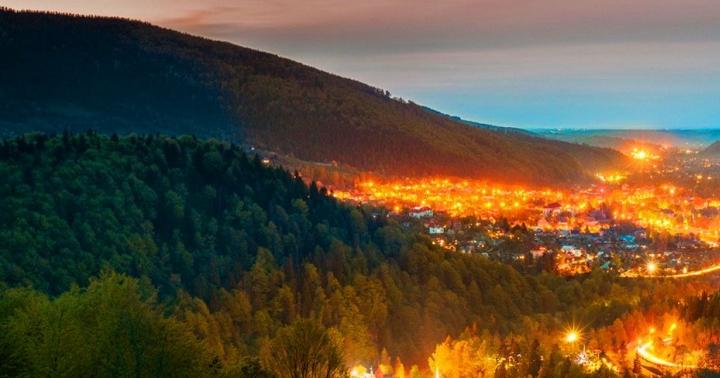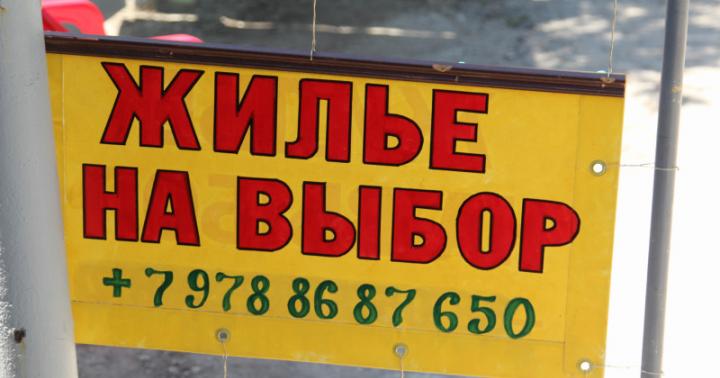For several years, a meme picture has been circulating on the Internet - the emotional, obscene impressions of a provincial from Moscow. Among them there is the phrase: “Bus 483, that’s a damn number!” The logic behind the numbering of urban transport is indeed not always obvious. The Village found out on what basis numbers are assigned to buses, trolleybuses and trams.
Press service of State Unitary Enterprise "Mosgortrans"
All city routes passenger transport capital cities have single-digit, two-digit and three-digit numbers. This numbering has developed historically and does not change. On new routes, vehicles are assigned new numbers or numbers of previously canceled routes. All numbering is individual, but there are also coincidences: routes can be designated the same way different types transport. So, tram No. 3, trolleybus No. 3 and bus No. 3 travel around the city, but they all follow different routes.
There is no need to assign four-digit numbers to new routes yet. There are, however, bus routes No. 1001, 1002 and 1004, which previously belonged to commercial carriers. In 2013, they were transferred to the management of Mosgortrans; for the convenience of passengers, the numbers were not changed.
Sometimes the specifics of a particular route are taken into account when numbering. For example, in Moscow there are several “social” directions of movement; they cover institutions of education, medicine, and social protection. The numbers of such routes begin with the letter C: C1, C2 and so on. There are also night routes of ground urban transport, these are buses No. H1, H2, H3. Letters are also used for shortened flights: they duplicate the busiest sections of the route. To make it easier for passengers to navigate, when entering such a route, the letter “k” (short) is added to the main number. There is, for example, bus route No. 709, which runs from the Orekhovo metro station to the Kashirskaya metro station, and there is No. 709k, which goes from the Orekhovo metro station to the Moskvorechye platform.

Konstantin Trofimenko
Director of the Center for Research on Transport Problems of Megacities at the Higher School of Economics
There is no special transport numbering system in Moscow - it’s a wild mixture between route numbers hundred years ago, Stalinist, Brezhnevist and numbers of the 1990s. They all layered on top of each other.
There are also routes that are designated using letters. This may be a consequence of the fact that the transport route was once divided into two parts. It also happens that the route branches: the vehicle follows the route, and then its version, with the letter A added to its numbering, turns right. The option without such a letter continues to follow straight. All this, of course, causes confusion. City navigation is absolutely not user-friendly. If a person does not specialize in this topic, he is unlikely to know about any routes other than those that he needs.
In Soviet times, work was regularly carried out to optimize the urban transport system. They stopped doing this in the 90s, but now attempts are being resumed. Last year, not only the problem of transport numbering was raised, but also the question of the need for certain routes. It happens that they lose relevance: for example, there was a bus that took people to the factory. The enterprise was closed and people stopped going there, but the route continues to function. Does the city need it? But, unfortunately, so far this work has not led to a positive result.
Illustration: Nastya Grigorieva
There are several types of public transport in Moscow: bus, trolleybus, tram, metro. There is the Butovskaya light metro line (in the south of the city) and a monorail from the Timiryazevskaya metro station to Sergei Eisenstein Street (in the north). Minibus taxis are very popular. During rush hour, it is better to choose the metro, since ground transport is usually stuck in traffic jams.
There are two river stations on the river - Northern and Southern - and several berths. Navigation opens in spring and closes in autumn, dates may vary depending on ice conditions. Motor ships sailing along the Moscow River are used mainly for excursion purposes.
In summer, bicycle taxis travel along the boulevards. A ride in such a taxi is more of an entertainment experience. There is little practical use from them, since the routes are very short.

Since 2013, several night routes have been operating.
Metro in Moscow
The metro has twelve lines. Stations open for entry around 5:30 (times can vary up to 15 minutes) and close for entry at 1:00. The last trains from the terminal stations of each line depart around 1:03. Line-to-line transfers formally close at 1:00, but in reality the transition is possible later if the last train in the required direction has not yet passed.

The interval of trains in the metro is on average 2-3 minutes, during rush hour on many lines it is 90 seconds, early in the morning and late in the evening up to 5-10 minutes. On the Kakhovskaya and Filevskaya lines, the intervals are longer than usual.
Ground transportation
Buses, trams and trolleybuses start operating at approximately 5:00-6:00. Most lines stop operating after midnight, but there are also those that stop operating in the early evening. Timetables for almost all routes are published on the Mosgortrans websites. At stops, full schedules are indicated for individual lines, for most - only intervals.

Route taxis(these are usually minibuses with 13-20 seats, and the line numbers have the letter M) as a rule, do not operate later than 23:00.
City buses have the Mosgortrans logo and serve lines in the number ranges 0-299 and 500-999. Buses with numbers from 300 to 499 are commuter buses (with the exception of some lines in “new Moscow” southwest of the Moscow Ring Road), and city tickets are not valid for them. Buses with numbers starting from 900 can be express buses. There are also separate letter designations for ground transport routes. The most famous of these lines is trolleybus B, which runs around the Garden Ring around the clock.

Among the night routes on this moment- only four daily, including bus 1H, going to Sheremetyevo airport. Several more lines only operate on weekend nights and holidays.
Electric trains are not formally part of the Moscow transport system, but in some cases they are the fastest way to travel between some areas. The main problem is the ragged schedule and fragmentation of the network: the bulk of electric trains travel from dead-end stations in the city center to the Moscow region along a dozen radial directions, and only a small number of flights cross the city right through.
Tariffs for public transport in Moscow
Payment for all types of transport at the entrance. The tariff systems of the metro and surface transport were partially unified in 2013. There are two main groups of tickets - valid in any transport (except for minibuses and trains) and valid only in buses, trams and trolleybuses.
Tickets for any transport are available at metro ticket offices, and options for 1-2 trips are available at station machines. The price is 40 rubles for one trip, 80 for two, 150 rubles for five, 300 for 11 trips, 500 for 20 trips, 1000 for 40 trips and 1200 rubles for 60 trips. Thus, in the latter case, one entrance to the transport costs 20 rubles - half as much as a single ticket. Transfers between the metro and the only monorail line are free if the same ticket is used to enter.

Tickets for bus, tram and trolleybus are available only at Mosgortrans kiosks and cost 30 rubles for one trip, 60 for two, 100 rubles for five, 200 rubles for 11 trips, 350 rubles for 20 trips, 700 rubles for 40 trips and 750 rubles for 60 trips.
Transport drivers only sell tickets for 4 trips for 100 rubles. In addition, they also have one-time “90 minutes” tickets available, which cost 50 rubles and include one trip on the metro and an unlimited number of them on ground transport(at the same time enter the last vehicle must be no later than 90 minutes after entering the first place). Reusable 90 Minutes tickets are sold at kiosks and metro ticket offices. For 2 trips such a ticket costs 100 rubles, for 5 - 220 rubles, for 11 - 450 rubles, for 20 - 750 rubles, for 40 trips - 1500 and for 60 - 1800.
Finally, for those who use transport only from time to time, there is a so-called “electronic wallet”, otherwise known as the Troika card. The passenger first credits the desired amount of money to it, and upon entering the transport, 28 rubles are debited from the card account in the metro, 26 in other transport and 44 rubles in the case of a transfer trip. The Troika card itself will cost another 50 rubles. In addition, other types of tickets can be credited to it, including commuter train passes.
On the electric trains themselves, the price of a single trip within Moscow is 28 rubles. When traveling outside the city, the tariff depends on the distance. Train stations usually have turnstiles at both the entrance and exit; a ticket is required in both cases.
In minibuses common price the fare is approximately 30-40 rubles, often higher on flights outside the Moscow Ring Road. Payment only in cash. Sometimes on short sections of the route the price may be lower than the standard price. It should be borne in mind that there are also small minibuses of Mosgortrans with its symbols and a board with the bus route number (without the letter M) - standard tickets are valid for them.
A free wireless Internet network is gradually being deployed in the Moscow metro. So far, several lines are equipped with it (Koltsevaya, Kakhovskaya, Kalininskaya), but it is likely that in the coming years the service will be available on all lines. In addition, access is available on at least part of trolleybus B, tram 3 and express bus 902.
How to get to Moscow airports
The easiest, but also the most expensive way to airports is by Aeroexpress train (to Sheremetyevo from Belorussky railway station, to Domodedovo - from Paveletsky, to Vnukovo - from Kievsky). The fare is 400 rubles (340 if purchased online).
In addition to Aeroexpress, you can get to it by buses 817 and 851 (the fare depending on the ticket used is from 12.5 to 30 rubles), as well as minibuses 948M and 949M (70 rubles), running from the metro stations "Planernaya" and " River Station". In addition, launched night bus H1 (12.5-30 rubles), coming from Leninsky Prospekt through the city center.
You can get to Vnukovo from the Yugo-Zapadnaya metro station by buses 611 and 611c (12.5-30 rubles) and minibus 45M (100 rubles).

To Domodedovo there is bus 308 (100 rubles) and minibus 308M (120 rubles) from Domodedovskaya, as well as about once every 2-3 hours by a regular train from Paveletsky Station (70-105 rubles depending on the landing location in Moscow).
Taxi in Moscow
Taxis in Moscow are extremely expensive for short trips - tariffs from various companies usually start from 350-500 rubles for any trip. As a rule, a trip lasting 20-30 minutes costs the same or a little more.

A trip to the airport usually costs 1000-1500 rubles, even from nearby areas.
With JavaScript disabled, you will not be able to use search. This page requires scripting support to function properly.
How to deal with this?
The second way is to use a simplified version of this search page, designed for older, simplified or incorrectly configured browsers. In this case, some functions will not be available. You can find this version of the search engine.
Excuse me, but I have JavaScript enabled!
If you are sure that JavaScript is supported by your browser and is currently allowed for this site, but you still see this message, then you can suggest the following to solve the problem:
- Do nothing. If the search works, then you can tolerate this message, right?
- Use a trusted browser. If you have a non-standard browser, we recommend using one of the ones we have tested. This search engine was tested under the browsers Internet Explorer, Mozilla Firefox, Opera and Konqueror, all of which showed full functionality.
The metropolitan metropolis lives an intense life around the clock, so traffic at night only decreases, but does not stop completely. Of course, cars predominate in this flow - personal cars and taxis, but there are also a number public transport.
How long does public transport run in Moscow?
The bulk of city buses, trolleybuses and trams begin their working day at 5-6 a.m., finishing at 11-11 p.m. Some routes, mainly outlying ones, operate until a maximum of 10 p.m. Minibus taxis operate the line in approximately the same range, starting work around 5.30-6.00 and finishing it closer to 23.00. The metro increases the chances for late passengers by another hour - the metro doors close at 01.00, opening again at 5:30-5:45 depending on the station.
Night transport in Moscow
But what about those who need to get to the airport, train station or home at night? The choice is small:
night public transport;
personal cars;
With a personal car, everything is clear, you can only note that it is inconvenient to go to the station or airport yourself - you will have to long term leave your car in a paid parking lot. And it’s not always convenient to get home if you’ve been actively resting before - you’ll also have to leave the car in the parking lot at night or order a “sober driver” service.
Night public transport routes in Moscow
In 2013, at the request of Muscovites, the authorities introduced the first night routes. Now 6 night buses run around the city every night at half-hour intervals, with one common end point - Lubyanskaya Square, thanks to which you can transfer from one route to another. The second final stop is different for everyone:
H1 - Sheremetyevo Airport;
H2 - Belovezhskaya street;
H3 - Ussuriyskaya street;
H4 - Novokosino;
H5 - Kashirskoe highway, 148;
H6 - Ostashkovskaya street.
There are also 3 trolleybuses and a tram on the line (from Chistye Prudy metro station to Akademika Yangelya Street). One of the trolleybuses moves along the Garden Ring at intervals of 15 minutes, the other two run every half hour: from Lubyanskaya Square to block 138 on Vykhino and from the station. m. "VDNH" to st. 10th anniversary of October.
Most night transport starts at 0.00 and leaves for the park around 6 am. The exact schedule of night public transport routes in Moscow can be seen on the Mosgortrans website.
Convenient taxi for night trips around Moscow
Night public transport in Moscow runs mainly along metro lines. If you are at night:
you need to go to another area not covered by buses and trolleybuses,
I don’t want to wait at least half an hour, and then have to walk to my own house,
you need to get to the train station or airport with your luggage and children, -
The best option would be to call a taxi, of course, if you choose the right company - inexpensive, reliable and comfortable, for example, "5 Star Taxi". Its advantages.


